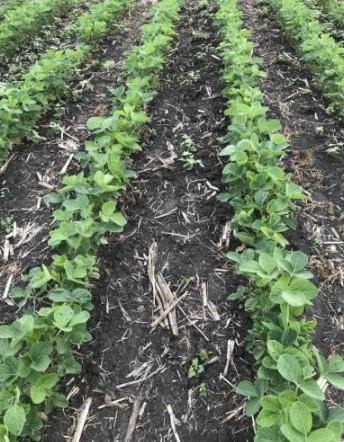Missing the preemergence herbicide can quickly turn into a weed management disaster this spring.

An effective preemergence herbicide program dramatically reduces the number of weeds exposed to postemergence herbicides.
Many products used in soybean are labeled only for preplant, preplant incorporated, or preemergence application, so careful planning to make sure these residuals go on before the crop begins to emerge is key this year. Check product labels for specific restrictions on the interval between planting and herbicide application. With the weather forecast as it currently stands, it is possible that fields planted in the next 10 days could emerge before sprayers are able to return for preemergence herbicide applications, if the focus remains solely on getting the crop planted.
In corn, most herbicides can be applied prior to or after crop emergence, meaning applicators have more flexibility to apply these products when timelines get tight. These labels are not without their own limits, including restrictions on timing of application by crop growth stage. Applicators should read labels carefully for growth stage limits, as well as any changes that might need to occur with tank mix partners, surfactants, or other additives like liquid nitrogen as a carrier. A potential downside of waiting until after crop emergence for these applications is yield loss related to competition from weeds. This article has more information on managing weeds to protect yield.
Balancing the need to get crops planted and have timely herbicide applications will likely be a significant challenge this spring. What may seem like a small delay in herbicide application to finish planting can easily turn into a weed management disaster if crops emerge before residual herbicides are applied. Prioritizing timely application of preemergence herbicides, especially in soybean, will be important to maintain optimal weed control, product performance, and crop yield this summer.
Source : iastate.edu